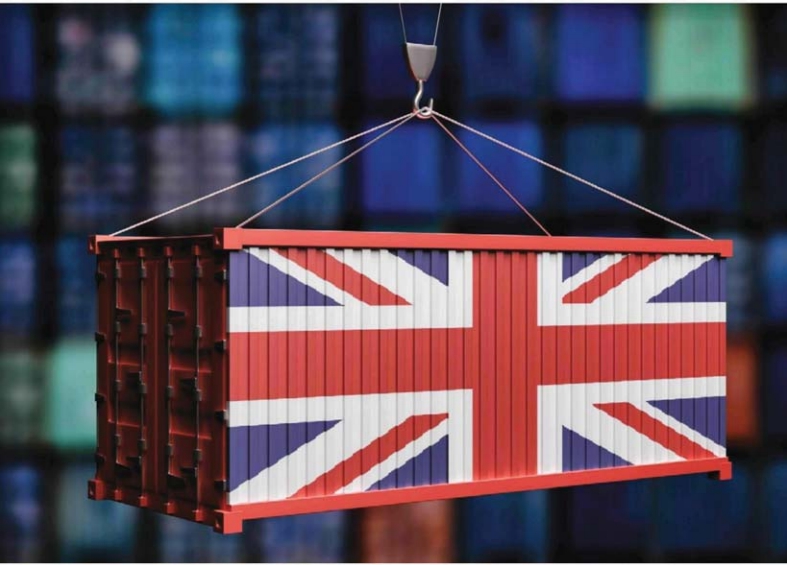- Contact 0870 350 7767
- |
- Advertise
WHAT’S THAT HUM? NOISE SOURCES THAT CAN IMPACT FOOD METAL DETECTOR SENSITIVITY
 News and PR from Fortress Technology Europe Ltd - Published 14 July 2022
Noise is a common occupational hazard in food processing factories. Some less obvious sound disturbances can impair the performance of highly sensitive metal detection and checkweighing equipment.
News and PR from Fortress Technology Europe Ltd - Published 14 July 2022
Noise is a common occupational hazard in food processing factories. Some less obvious sound disturbances can impair the performance of highly sensitive metal detection and checkweighing equipment.Many factors determine the theoretical sensitivity of a metal detector. Among them are the aperture size (the smaller the aperture, the smaller the piece of metal that can be detected), the type of metal, product effect, and the orientation of the product and contaminant as it passes through the detector. However, environmental conditions, such as airborne electrical interference – static, radio or earth loops – vibration, for example moving metal, and temperature fluctuations, such as ovens or cooling tunnels, may also affect performance.
Unique features like Noise Immunity Structure and digital filters which feature on the companyÂ’s digital metal detectors can suppress some of this interference noise, which may otherwise require reducing the sensitivity levels manually.
The most widespread challenge Fortress engineers encounter turns out to be quite a common issue in food factories. Particularly on end-to-end processing lines incorporating robots, bagging, flow wrapping and conveyors. The effects of electromagnetic interference can negatively impact the performance of metal detectors resulting in false detections, false rejections, and consequently increase food safety risks.
“Packaging machines such as flow wrappers and conveyor belts tend to be the biggest cause of ground loop issues due to worn out or loose fixings and rollers” says Nathan.
Finding the source of the problem quickly and accurately is critical, as ongoing interference on automated processing lines can cause service disruptions. Fortress can deploy a sniffer unit to swiftly track the source of nearby EMI and RFI. Like an antenna, the white disc measures wavelengths and can swiftly located the source of the competing frequencies. With this information, engineers can shield, surpress or alter the path of the emissions.
Fortress also offers the option to upgrade to a high voltage oscillator (HVO). For extremely noisy production settings, including highly automated plants, this solution makes the Fortress metal detector the dominant noise source.
User-friendly Fortress features like automated single pass learning and calibration can deliver an accurate system set-up within seconds and eliminate human errors. Additionally, built-in noise immunity structure – included as standard on all Fortress digital metal detectors, can dramatically reduce the effects of external electrical noise, again resulting in fewer false product rejects.
Nathan concludes: “It is impossible to completely eliminate noise interference in production environments. Yet, by taking these precautions and seeking expert guidance, our engineers can significantly reduce the EMI feedback and ensure metal detection performance and sensitivity is not compromised.”
Other announcements from Fortress Technology Europe Ltd
-
Off-the-shelf: Delivering supermarket-spec food safety due diligence
Metal detection systems continue to be the mainstay of preventing contaminants entering the food production chain. As more and more advanced equipment enters the market, food safety specialist Fortres
30 Jan 2023
-
FREIGHT BRITAIN: UK FOOD MANUFACTURERS PULL FORWARD ON LOCAL MACHINE INVESTMENNT
Speed, proximity and short lead times are emerging as strong influencers to the Made in Britain rationale.
14 Jul 2022
-
Plant eating boom pushes pipeline inspection innovations
With plant-based eating now mainstream in the UK, contamination detection specialist Fortress Technology is reporting high demand for its range of hygienic pipeline metal detection and x-ray systems
14 Jul 2022
-
Raptor Combi makes COP compliance child’s play
Fortress Technology’s new Raptor Combi inspection system is assisting new Irish start-up company Soothing Solutions
14 Jul 2022
-
FORTRESS UNEILS HIGH PERFORMANCE REPTON
Fortress Technology, in collaboration with Sparc Systems, has unveiled its first ever modular, high performance, affordable combination metal detector and check weighing system.
29 Sep 2021
-
-
SOWING THE SEEDS FOR HIGH SPEED CONTAMINANT REJECTION
Levantine specialises in the baking, caramelising and seasoning of edible nuts and seeds.
29 Sep 2021
-
Metal detector specialist reinforces ‘Love Food, Hate Waste’ pledge
Reducing food waste in production is a growing priority for manufacturers, and false rejects from all-important metal detectors can be a major contributing factor.
03 Aug 2017












